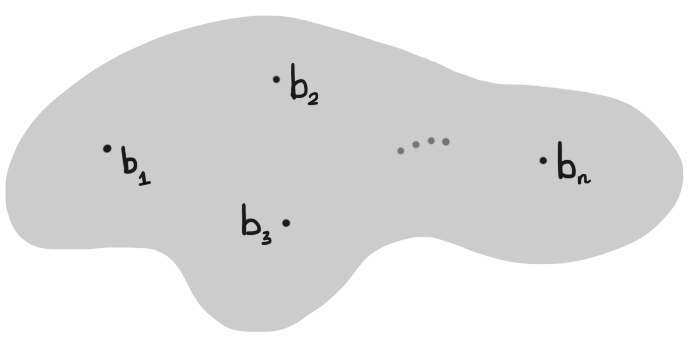
Figure 1: The setting for Cauchy's residue theorem is a simply connected domain and marked points $b_1,\dots,b_n$.
Home | Assessment | Notes | Worksheets | Blackboard
Cauchy's residue theorem tells us that - under certain broad circumstances - we can calculate contour integrals simply by calculating coefficients in Laurent series. Specifically, we will need the coefficient $a_{-1}$ which from now on has a special name.
If $f : \Ann(b,r,R) \to \C$ is holomorphic then the coefficient $a_{-1}$ in its Laurent series centered at $b$ is called the residue of $f$ at $b$. Write $\Res(f,b)$ for the residue of $f$ at $b$.
The setup for Cauchy's residue theorem is a simply connected domain $D$ and a finite set of points $b_1,\dots,b_n \in D$. Recall that $D$ is simply connected if $\wind(\Gamma,z) = 0$ whenever $\Gamma$ is a closed contour in $D$ and $z \in \C \setminus D$. Roughly speaking, simply connected means that $D$ does not have any holes in it.

Figure 1: The setting for Cauchy's residue theorem is a simply connected domain and marked points $b_1,\dots,b_n$.
The connection between residues and contour integration comes from Laurent's theorem: it tells us that \[ \Res(f,b) = a_{-1} = \dfrac{1}{2 \pi i} \int\limits_\gamma f(z) \intd z = \dfrac{1}{2 \pi i} \int\limits_0^{2 \pi} f(b + s e^{it}) i e^{it} \intd t \] when $\gamma(t) = b + s e^{it}$ on $[0,2\pi]$ for any $r < s < R$. Combining this with the generalized Cauchy theorem gives Cauchy's celebrated residue theorem.
Let $D \subset \C$ be a simply connected domain. Suppose $f : D \setminus \{ b_1,\dots, b_n \} \to \C$ is holomorphic with poles at each of the $b_i$. For any closed contour $\Gamma$ in $D \setminus \{b_1,\dots,b_n \}$ we have \[ \int\limits_\Gamma f = 2 \pi i \sum_{j=1}^n \wind(\Gamma,b_j) \Res(f,b_j) \]
The closed contour $\Gamma$ has a winding number $\wind(\Gamma,b_j)$ around each of the points $b_j$. Whenever $\wind(\Gamma,b_j)$ is positive define $\gamma_j(t) = b_j + r_j e^{-it}$ on $[0,2 \pi |\wind(\Gamma,b_j)|]$ with $r_j$ chosen so small that the circle centered at $b_j$ of radius $2r_j$ does not contain any other $b_k$. Similarly, whenever $\wind(\Gamma,b_j)$ is negative, define $\gamma_j(t) = b_j + r_j e^{it}$ on $[0,2 \pi |\wind(\Gamma,b_j)|$ with $r_j$ again so small that no other $b_k$ is contained on or within $\gamma_j$. We have \[ \wind(\Gamma,b_j) + \wind(\gamma_1,b_j) + \cdots + \wind(\gamma_j,b_j) + \cdots + \wind(\gamma_n,b_j) = 0 \] for all $1 \le j \le n$. We can therefore apply the generalized Cauchy theorem to deduce that \[ \int\limits_\Gamma f + \int\limits_{\gamma_1} f + \cdots + \int\limits_{\gamma_n} f = 0 \] and calculate by hand that \[ \begin{align*} \int\limits_{\gamma_j} f ={} & \pm \int\limits_0^{2 \pi |\wind(\gamma_j,b_j)|} f(b_j + r_j e^{\pm it}) i e^{\pm it} \intd t \\ ={} & \wind(\gamma_j,b_j) \int\limits_0^{2\pi} f(b_j + r_j e^{\pm it}) i e^{\pm it} \intd t \\ ={} & - 2 \pi i \wind(\Gamma,b_j) \Res(f,b_j) \end{align*} \] for all $1 \le j \le n$. $\square$
The applicability of the theorem goes hand in hand with our ability to calculate residues. We will cover the calculation of residues in the next section.